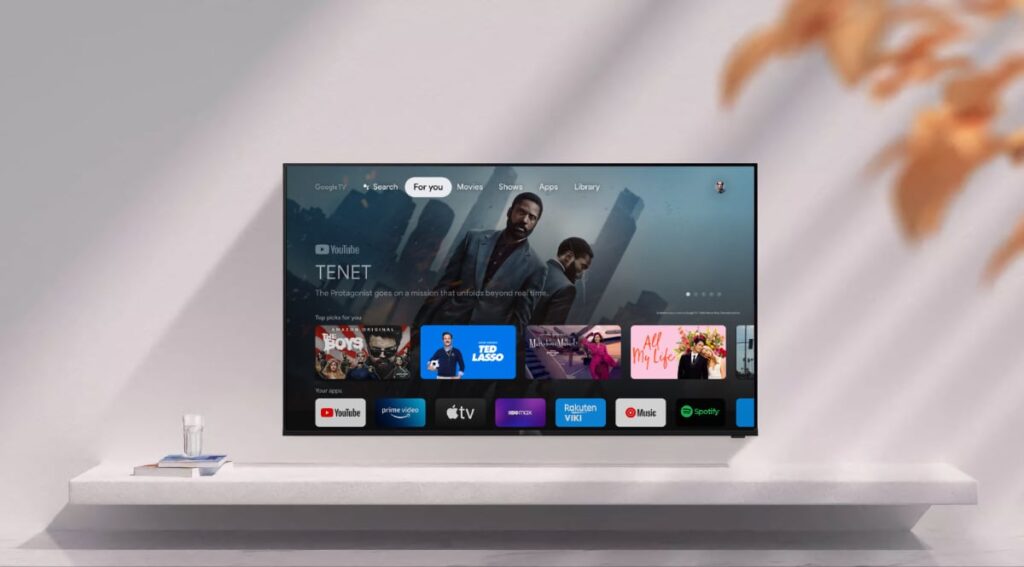Now that Android 12 is available, the Chromecast with Google TV can be updated. This update brings a number of new capabilities, one of which will be especially appreciated by movie buffs.
More privacy features, security enhancements, options to customise HDR and surround sound format settings, and frame-rate matching are all part of the upgrade that is currently rolling out (via FlatpanelsHD(opens in new tab)).
The final one is the most important; we’ll get into more technical specifics below, but it will allow the Chromecast to automatically switch from its native 60 frames per second video output to 24 frames per second (the proper frame rate for movies) whenever a movie is started. As long as your TV runs at 120 Hz, you can enjoy cinematic motion on it without the use of motion processing.
This won’t matter if you don’t have a 120Hz TV (again, we’ll explain why in a moment), but nowadays, the majority of new mid-range or premium TVs feature a 120Hz screen.
This upgrade helps the Chromecast catch up despite being significantly less expensive because the Apple TV 4K has had this capability for a long and it’s one of the reasons we rate it as the top streaming device overall.
Beyond the aforementioned, if you update to Android 12, it will fix bugs and improve the performance of the 4K Chromecast with Google TV. (The newer, less expensive HD Chromecast with Google TV came pre-installed with Android 12.)

Analysis: 24fps and 120Hz explained
Timing is key to achieving the ideal cinematic motion on a TV. Movies are produced with a frame rate of 24 fps. 60 times per second is the refresh rate for LCD/OLED TVs that are older or less expensive.
Quick mathematicians will recognise the issue right away: 24 does not split evenly into 60. This means that some movie frames will be shown for longer than a 24th of a second, and some will be shown for shorter, because it is impossible for the timing of the movie frames to completely sync up with how often the TV shows a new image.
You can truly see this when something is moving slowly and consistently, such when a camera pans across a landscape; instead of seeming smooth, it will appear slightly juddery since the timing between frames isn’t consistent.
This is why you normally shouldn’t completely off motion processing on these TVs; at a low setting, it ought to help to reduce this judder.
We were able to put an end to this with the advent of 120Hz TVs. Since 120Hz TVs cleanly double the refresh rate from 60 to 120 times per second, they are compatible with anything that used to run at 60 frames per second. However, because 120 divides neatly by 24, they can also flawlessly sync with 24fps movies.
So in theory, you could view 24 frames per second movies on a 120 Hz TV while disabling motion processing to get authentic cinematic motion.
However, it only functions if the stream you’re receiving from your device is actually 24 frames per second (fps). However, many streamers deliver video via HDMI at 60 fps because it’s more convenient for 60Hz TVs. This implies that even if you have a 120Hz TV, you still won’t get the benefits of natural cinema motion. However, some TVs contain features that attempt to recreate the original 24fps motion as closely as possible (for example, “Real Cinema” on LG TVs).
In other words, the purpose of the Chromecast’s “Match content frame rate” feature is to force the streamer to change its output from 60 frames per second to 24 frames per second over HDMI when it recognises that you’re watching a movie, and back to 60 frames per second for TV shows or anything else.
With your 4K Chromecast, you can finally enjoy a movie’s motion as it was intended to be seen on one of the top TVs or 4K projectors.


